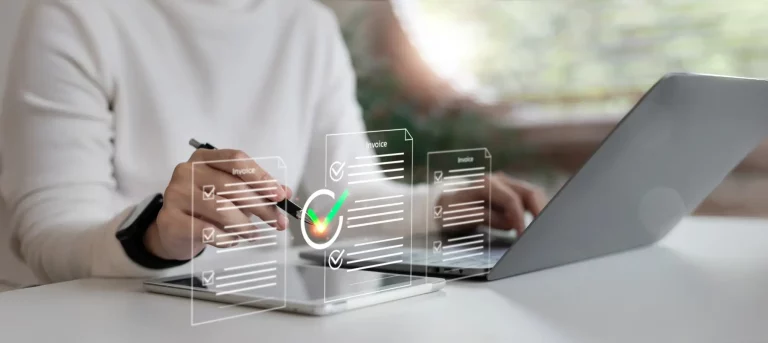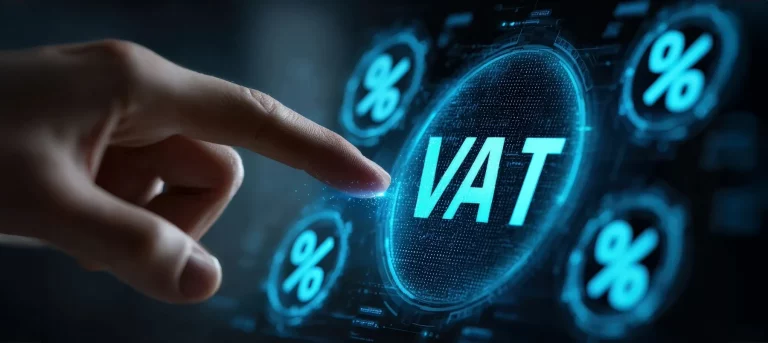In classic invoices, you often encounter them: discount cash or prompt payment discounts. But what if you switch to e-invoicing or invoice through the Peppol network? Does that discount remain? Is it supported in the digital format? And how do you pass them correctly in a machine-readable invoice?
What can you read on this page?
What is discount cash?
A financial discount or cash discount is a discount your customer receives when they pay faster than the normal payment deadline. For example:
Invoice amount: €1,000
Discount cash: 2% if paid within 10 days
Normal payment term: 30 days
If the customer pays within the 10 days, he pays €980. If he pays later, then the full amount of €1,000 applies.
Note that this is not cash, but a financial incentive for faster payment.
VAT processing at financial discount
This is often where the biggest pitfall lies. VAT must always be calculated on the amount after applying the discount, according to the VAT Code (Article 28, 1°).
Example:
| Description | Amount |
|---|---|
| Total excluding VAT | €100 |
| Financial discount (2%) | €2 |
| Measure of charge | €98 |
| VAT 21%. | €20,58 |
| Total on invoice (without discount) | €120,58 |
| Payable when paid on time | €118,58 |
If the customer pays late, he pays the full amount of €100 + €20.58 VAT = €120.58.
This is a special case of a “discount for earlier payment,” and this is where things often go wrong in e-invoicing if the fields are not filled in correctly.
What is commercial discounting
In addition to financial discount, you can also give a commercial discount. This is a discount on the gross amount and is included in the operating result, not as a financial cost as with a financial discount.
A commercial discount can be applied to one product or the total amount; therefore, it does not have to be on the entire invoice.
Example:
| Description | Amount |
|---|---|
| Total price excluding VAT | €100 |
| Commercial discount (2%) | €2 |
| Measure of charge | €98 |
| VAT 21%. | €20,58 |
| Total amount on invoice (with discount, incl. VAT) | €118,58 |
| Payable | €118,58 |
Important difference:
Like a financial rebate, VAT is calculated on the amount after the rebate is applied.
Accounting-wise, the difference is significant: a financial discount is a deductible financial expense, while a commercial discount is part of operating income.
Is discount cash supported in e-invoicing?
Yes. Both UBL (the invoice format on which e-invoicing and Peppol are based) and the Peppol network fully support discount cash. The standard provides specific fields for the discount percentage, period and payment terms so that the discount can be processed correctly by software and is clear to the recipient.
Not every Access Point supports discount cash
In practice, many Peppol Access Points and e-invoicing tools do not process discount cash correctly by default, and often are unaware of the specific VAT rules. Some omit or misinterpret the relevant fields, which may result in incorrect VAT calculation. The result: your customer receives an invoice without a clear discount or with an incorrectly calculated VAT, which can lead to confusion, accounting errors or late payments.
Therefore, it is crucial to choose a quality Access Point that does support these situations correctly. That way, you can be sure that financial discounts are coming through correctly, including correct VAT handling, and that your e-invoicing is working smoothly for both you and your customers.
The risk? Your customer gets an invoice with no clear discount or terms, causing confusion or late payment.
How is discount cash technically passed on?
In a UBL invoice, discount cash is included via specific fields such as:
- PaymentTerms: description of the discount, for example “2% discount for payment within 10 days”.
- PaymentDueDate: the deadline by which the discount is still valid.
- SettlementDiscountPercent: the discount percentage that applies
- SettlementPeriod: the period during which the discount can be applied (e.g. 10 days from invoice date).
Note in practice:
Not every accounts payable system automatically reads these fields correctly. As a result, sometimes the discount cannot be applied or the VAT is calculated incorrectly. VAT should always be calculated on the amount after the discount has been applied, even if the customer does not use the discount.
In short, using the UBL fields is technically simple, but correct implementation in software and correct VAT handling sometimes make it complex in practice.
Why is this important for finance?
Proper discount cash provides benefits for:
- Better cash flow: Encourage quick payments
- Correct processing: Accounting software automatically recognizes the rebate
- Legal clarity: The discount is formally established in the invoice
What about Peppol?
Do you invoice through Peppol? Make sure your service provider or software vendor correctly includes discount cash in the
Be aware that some tools send only the final amount along with no mention of discounts or conditions. This can lead to errors.
At Nymus, we include discount cash explicitly in your Peppol invoice, including total amount excluding VAT and payment reminder if necessary.
Summary
Question
Reply
Want to know more?
Passing discount cash correctly in your e-invoicing flow is perfectly possible, as long as your software understands the rules of the game. Want to know if your invoices are set up correctly? Whether your Access Point includes the right fields?
We like to look at it together. No sales talk, just insight into what’s technically possible and how to get you paid faster.
Download our free e-invoicing whitepaper!
HIGHLIGHTED ARTICLES



